Source Website: https://www.scmp.com/week-asia/health-environment/article/3076926/singapore-way-eight-steps-fight-coronavirus-thousands
By Kok Xing Hui, South China Morning Post, 28 March 2020 at 7:30am
By Kok Xing Hui, South China Morning Post, 28 March 2020 at 7:30am
PHOTO: Throughout the world, overworked health care professionals are being infected with Covid-19, yet the Lion City has kept numbers low.
Preparation, planning, patient ratios and protective equipment have all played a part. Still, even the best gear cannot guard against discrimination.
Photo: AFP
Picture posted by Kok Xing Hui, South China Morning Post on 28 March 2020 at 7:30am - Medical staff walk to the National Centre for Infectious Diseases building at Tan Tock Seng Hospital in Singapore.
https://blogger.googleusercontent.com/img/b/R29vZ2xl/AVvXsEhEBjws8VHDbb-TULvBaJnTH6jPwHnZfFHemr5yik6mVNH5gB9lOQ7fMrV0moxMckLwO_rOFLVoV0q5juJgG1_dubNdzJ-QlVFlLuEuFyPmSZoKIck91gvNC0frCeVwj8pUlJDrZH_UNDA/s1600/b3037a60-7012-11ea-b0ed-5e14cf8eb9e1_image_hires_115118.png
https://cdn.i-scmp.com/sites/default/files/styles/1200x800/public/d8/images/methode/2020/03/29/b3037a60-7012-11ea-b0ed-5e14cf8eb9e1_image_hires_115118.jpg?itok=1Jck61Vl&v=1585453887
https://www.scmp.com/week-asia/health-environment/article/3077345/coronavirus-why-so-few-infections-singapores-health
Uncooperative patients, long hours and a lack of protective equipment are hampering health care workers across the world as they take the fight to the coronavirus, leading many to fall sick themselves.
In Malaysia, a pregnant woman who did not disclose that her father was infected tested positive after giving birth, leading to the shutdown of the entire hospital for cleaning. In the Philippines, nine doctors have died, two of whom had dealt with a patient who lied about her travel history.
In Spain, where more than 5,400 health care workers have been infected, accounting for about 14 per cent of the country’s patients, there are no longer enough workers to care for patients.
In Italy, which has more than 69,000 patients, the virus killed a doctor who had no choice but to work without gloves.
In the United States, which has surpassed China to become the world’s most infected nation with more than 83,000 people testing positive for Covid-19, hospitals are being overrun with patients.
Preparation, planning, patient ratios and protective equipment have all played a part. Still, even the best gear cannot guard against discrimination.
Photo: AFP
Picture posted by Kok Xing Hui, South China Morning Post on 28 March 2020 at 7:30am - Medical staff walk to the National Centre for Infectious Diseases building at Tan Tock Seng Hospital in Singapore.
https://blogger.googleusercontent.com/img/b/R29vZ2xl/AVvXsEhEBjws8VHDbb-TULvBaJnTH6jPwHnZfFHemr5yik6mVNH5gB9lOQ7fMrV0moxMckLwO_rOFLVoV0q5juJgG1_dubNdzJ-QlVFlLuEuFyPmSZoKIck91gvNC0frCeVwj8pUlJDrZH_UNDA/s1600/b3037a60-7012-11ea-b0ed-5e14cf8eb9e1_image_hires_115118.png
https://cdn.i-scmp.com/sites/default/files/styles/1200x800/public/d8/images/methode/2020/03/29/b3037a60-7012-11ea-b0ed-5e14cf8eb9e1_image_hires_115118.jpg?itok=1Jck61Vl&v=1585453887
https://www.scmp.com/week-asia/health-environment/article/3077345/coronavirus-why-so-few-infections-singapores-health
Uncooperative patients, long hours and a lack of protective equipment are hampering health care workers across the world as they take the fight to the coronavirus, leading many to fall sick themselves.
In Malaysia, a pregnant woman who did not disclose that her father was infected tested positive after giving birth, leading to the shutdown of the entire hospital for cleaning. In the Philippines, nine doctors have died, two of whom had dealt with a patient who lied about her travel history.
In Spain, where more than 5,400 health care workers have been infected, accounting for about 14 per cent of the country’s patients, there are no longer enough workers to care for patients.
In Italy, which has more than 69,000 patients, the virus killed a doctor who had no choice but to work without gloves.
In the United States, which has surpassed China to become the world’s most infected nation with more than 83,000 people testing positive for Covid-19, hospitals are being overrun with patients.
PHOTO: In the United States, which has surpassed China to become the world’s most infected nation with more than 189,500 people testing positive for Covid-19, hospitals are being overrun with patients. (Wednesday, 01 April 2020, 5:14pm).
Picture posted by Kok Xinghui and Dewey Sim on 25 March 2020 at 4:39pm - The Singapore way: eight steps to fight the coronavirus as thousands return home
https://blogger.googleusercontent.com/img/b/R29vZ2xl/AVvXsEiWAA3ry07PhsVhEydn4AupweZ-53u5kGLsGe_5kbt_FbUgLwy7vfPAA7iIhLmWMeOHZLrlkeU4t8sMnncB_4gR22nMwtgRe_1STx9RH7NsLOYiY7At2w1xLA_8LJv2995YRHYkCbE7SVM/s1600/WHO_01April2020.png
WHO_01April2020.png
https://www.scmp.com/week-asia/health-environment/article/3076926/singapore-way-eight-steps-fight-coronavirus-thousands
Health care staff in the country say patients are packed into emergency wards and intensive care units (ICUs), further raising the risk of infections. They also report shortages of ventilators, face masks, gowns and shields.
The US Centres for Disease Control and Prevention on March 7 released interim guidelines saying health care workers exposed to the coronavirus could be asked to return to work as long as they wore face masks and were not showing symptoms, if their employers had no other manpower available.
Picture posted by Kok Xinghui and Dewey Sim on 25 March 2020 at 4:39pm - The Singapore way: eight steps to fight the coronavirus as thousands return home
https://blogger.googleusercontent.com/img/b/R29vZ2xl/AVvXsEiWAA3ry07PhsVhEydn4AupweZ-53u5kGLsGe_5kbt_FbUgLwy7vfPAA7iIhLmWMeOHZLrlkeU4t8sMnncB_4gR22nMwtgRe_1STx9RH7NsLOYiY7At2w1xLA_8LJv2995YRHYkCbE7SVM/s1600/WHO_01April2020.png
WHO_01April2020.png
https://www.scmp.com/week-asia/health-environment/article/3076926/singapore-way-eight-steps-fight-coronavirus-thousands
Health care staff in the country say patients are packed into emergency wards and intensive care units (ICUs), further raising the risk of infections. They also report shortages of ventilators, face masks, gowns and shields.
The US Centres for Disease Control and Prevention on March 7 released interim guidelines saying health care workers exposed to the coronavirus could be asked to return to work as long as they wore face masks and were not showing symptoms, if their employers had no other manpower available.
PHOTO: Malaysian health workers at Kuala Lumpur International Airport.
Photo: AFP
Picture posted by Kok Xing Hui, South China Morning Post on 28 March 2020 at 7:30am
https://blogger.googleusercontent.com/img/b/R29vZ2xl/AVvXsEg8-Uzuh7qr8TYxLRK6uhemgzgk6x7P_glMDov4M6oE5Sf8TRFq4OWzPRkQD9QNqHqXWsOYU687qrau7K1CKxvO61bMBqYZDguKW-v4pOIRNrUtBnuqBjMYpZYmhDd72d20VMvhyphenhyphenLg1OtA/s1600/6e5b6278-6ff5-11ea-b0ed-5e14cf8eb9e1_1320x770_115118.png
https://cdn.i-scmp.com/sites/default/files/d8/images/methode/2020/03/29/6e5b6278-6ff5-11ea-b0ed-5e14cf8eb9e1_1320x770_115118.jpg
https://www.scmp.com/week-asia/health-environment/article/3077345/coronavirus-why-so-few-infections-singapores-health
A REASON FOR OPTIMISM
However, amid all the gloom, Singapore’s experience is being held up as a reason for optimism. The city state has reported more than 630 cases of infection, all of which are being treated in hospital, yet only a handful of its health care professionals have been infected. What’s more, even these cases, according to Vernon Lee, director of communicable diseases at the Ministry of Health, are thought to have been infected outside the health care setting.
Experts suggest this has been more than just luck, pointing to a case in which 41 health workers were exposed to the coronavirus in a Singapore hospital yet evaded infection.
The workers had all come within two metres of a middle-aged man with Covid-19 who was being intubated, a procedure which involves a tube being inserted into the patient’s trachea. The procedure is seen as being particularly hazardous for health workers as it is “aerosol generating” – patients are likely to cough.
The workers had not known at the time that the man had the virus and all were quarantined after he tested positive. However, on their release two weeks later, none of them had the virus.
The case has come to widespread attention partly because the workers were wearing a mix of standard surgical masks and the N95 mask, which doctors see as the gold standard as it filters out 95 per cent of airborne particles.
The conclusion, published in The Annals of Internal Medicine this month, was this: “That none of the health care workers in this situation acquired infection suggests that surgical masks, hand hygiene, and other standard procedures protected them from being infected.”
Surgeon and writer Atul Gawande mentioned the case in an article for The New Yorker on how health care workers could continue seeing patients without becoming patients. He said there were things to learn from Asia and that some of the lessons came out of the “standard public health playbook”. In other words, there is much to be said for social distancing, basic hand hygiene and cleaning regimens.
Photo: AFP
Picture posted by Kok Xing Hui, South China Morning Post on 28 March 2020 at 7:30am
https://blogger.googleusercontent.com/img/b/R29vZ2xl/AVvXsEg8-Uzuh7qr8TYxLRK6uhemgzgk6x7P_glMDov4M6oE5Sf8TRFq4OWzPRkQD9QNqHqXWsOYU687qrau7K1CKxvO61bMBqYZDguKW-v4pOIRNrUtBnuqBjMYpZYmhDd72d20VMvhyphenhyphenLg1OtA/s1600/6e5b6278-6ff5-11ea-b0ed-5e14cf8eb9e1_1320x770_115118.png
https://cdn.i-scmp.com/sites/default/files/d8/images/methode/2020/03/29/6e5b6278-6ff5-11ea-b0ed-5e14cf8eb9e1_1320x770_115118.jpg
https://www.scmp.com/week-asia/health-environment/article/3077345/coronavirus-why-so-few-infections-singapores-health
A REASON FOR OPTIMISM
However, amid all the gloom, Singapore’s experience is being held up as a reason for optimism. The city state has reported more than 630 cases of infection, all of which are being treated in hospital, yet only a handful of its health care professionals have been infected. What’s more, even these cases, according to Vernon Lee, director of communicable diseases at the Ministry of Health, are thought to have been infected outside the health care setting.
Experts suggest this has been more than just luck, pointing to a case in which 41 health workers were exposed to the coronavirus in a Singapore hospital yet evaded infection.
The workers had all come within two metres of a middle-aged man with Covid-19 who was being intubated, a procedure which involves a tube being inserted into the patient’s trachea. The procedure is seen as being particularly hazardous for health workers as it is “aerosol generating” – patients are likely to cough.
The workers had not known at the time that the man had the virus and all were quarantined after he tested positive. However, on their release two weeks later, none of them had the virus.
The case has come to widespread attention partly because the workers were wearing a mix of standard surgical masks and the N95 mask, which doctors see as the gold standard as it filters out 95 per cent of airborne particles.
The conclusion, published in The Annals of Internal Medicine this month, was this: “That none of the health care workers in this situation acquired infection suggests that surgical masks, hand hygiene, and other standard procedures protected them from being infected.”
Surgeon and writer Atul Gawande mentioned the case in an article for The New Yorker on how health care workers could continue seeing patients without becoming patients. He said there were things to learn from Asia and that some of the lessons came out of the “standard public health playbook”. In other words, there is much to be said for social distancing, basic hand hygiene and cleaning regimens.
PHOTO: A health worker in protective gear walks into a quarantine room at a hospital in Banda Aceh, Indonesia.
Photo: AFP
Picture posted by Kok Xing Hui, South China Morning Post on 28 March 2020 at 7:30am
https://blogger.googleusercontent.com/img/b/R29vZ2xl/AVvXsEigITI3dSPUWN6o9zEsPcQx3fJE8XYpQntmVkeLI-RvKUPqKiKpILrOORgbvNkA4xDvAYeyS4tRtSVhEwR9ZvNq-misxqV7-Uy8PB9DSYZ64LiWau9IfQbDAiG2I02wlNf5lNGd-sf117g/s1600/5c6682fa-6ff5-11ea-b0ed-5e14cf8eb9e1_1320x770_115118.png
https://cdn.i-scmp.com/sites/default/files/d8/images/methode/2020/03/29/5c6682fa-6ff5-11ea-b0ed-5e14cf8eb9e1_1320x770_115118.jpg
https://www.scmp.com/week-asia/health-environment/article/3077345/coronavirus-why-so-few-infections-singapores-health
COMING TOGETHER
With critical supplies running short in many countries, experts say it is increasingly vital that countries share both knowledge and resources.
To this end, China has been donating personal protective equipment to places including the Philippines, Pakistan and Europe. China’s richest man Jack Ma is donating 1.8 million masks, 210,000 Covid-19 test kits and 36,000 pieces of protective clothing to 10 countries in Asia.
At the same time, doctors are encouraging the Western world to learn from Asia.
Infectious diseases expert Leong Hoe Nam said that being “bitten by Sars” (severe acute respiratory syndrome) in 2003 had prepared Asia for Covid-19, while Western countries were not similarly prepared and hence lacked sufficient protective equipment.
He pointed to how about 2,000 health care workers had fallen sick in China early in the outbreak because workers did not initially have protective gear. The trend reversed as equipment became available.
“Once the defences were up, there were very few health care workers who fell sick at work. Rather, they fell sick from contact with sick individuals outside the workplace,” he said.
Malaysia is a case in point. While it has reported 80 health care workers falling ill, most are thought to be community infections.
In a webinar organised by Caixin Global on Thursday night, Peng Zhiyong, an intensive care specialist at Zhongnan Hospital of Wuhan University, shared how they managed a shortage of personal protective equipment early on in the outbreak by rationing workers to two sets of gear per shift.
Meanwhile, in the Philippines, doctors from Manila’s Chinese General Hospital held a video conference call with doctors in Zhejiang to learn from China’s experience of treating Covid-19 patients.
Crowdsourcing platforms have also been created to share advice. The Brigham and Women’s Hospital in Boston has released guidelines for treating critically ill patients and its website includes information from Chinese doctors.
The Jack Ma Foundation has also launched an online platform for doctors and nurses around the world to share knowledge on fighting the virus. “One world, one fight,” it said in a tweet.
Associate Professor Jeremy Lim from the global health programme at the Saw Swee Hock School of Public Health said it was crucial for countries to work together.
“Viruses don’t respect borders. Countries have to share information and help each other as we are only as strong as the weakest link. Any country can become a reservoir of disease and the world may then be forced to endure a ping-pong of outbreaks over and over again.”
And the advice of Lee, at Singapore’s Ministry of Health? “Practise good hygiene and wash hands regularly.”
Picture posted by Kok Xing Hui, South China Morning Post on 28 March 2020 at 7:30am
https://blogger.googleusercontent.com/img/b/R29vZ2xl/AVvXsEigITI3dSPUWN6o9zEsPcQx3fJE8XYpQntmVkeLI-RvKUPqKiKpILrOORgbvNkA4xDvAYeyS4tRtSVhEwR9ZvNq-misxqV7-Uy8PB9DSYZ64LiWau9IfQbDAiG2I02wlNf5lNGd-sf117g/s1600/5c6682fa-6ff5-11ea-b0ed-5e14cf8eb9e1_1320x770_115118.png
https://cdn.i-scmp.com/sites/default/files/d8/images/methode/2020/03/29/5c6682fa-6ff5-11ea-b0ed-5e14cf8eb9e1_1320x770_115118.jpg
https://www.scmp.com/week-asia/health-environment/article/3077345/coronavirus-why-so-few-infections-singapores-health
COMING TOGETHER
With critical supplies running short in many countries, experts say it is increasingly vital that countries share both knowledge and resources.
To this end, China has been donating personal protective equipment to places including the Philippines, Pakistan and Europe. China’s richest man Jack Ma is donating 1.8 million masks, 210,000 Covid-19 test kits and 36,000 pieces of protective clothing to 10 countries in Asia.
At the same time, doctors are encouraging the Western world to learn from Asia.
Infectious diseases expert Leong Hoe Nam said that being “bitten by Sars” (severe acute respiratory syndrome) in 2003 had prepared Asia for Covid-19, while Western countries were not similarly prepared and hence lacked sufficient protective equipment.
He pointed to how about 2,000 health care workers had fallen sick in China early in the outbreak because workers did not initially have protective gear. The trend reversed as equipment became available.
“Once the defences were up, there were very few health care workers who fell sick at work. Rather, they fell sick from contact with sick individuals outside the workplace,” he said.
Malaysia is a case in point. While it has reported 80 health care workers falling ill, most are thought to be community infections.
In a webinar organised by Caixin Global on Thursday night, Peng Zhiyong, an intensive care specialist at Zhongnan Hospital of Wuhan University, shared how they managed a shortage of personal protective equipment early on in the outbreak by rationing workers to two sets of gear per shift.
Meanwhile, in the Philippines, doctors from Manila’s Chinese General Hospital held a video conference call with doctors in Zhejiang to learn from China’s experience of treating Covid-19 patients.
Crowdsourcing platforms have also been created to share advice. The Brigham and Women’s Hospital in Boston has released guidelines for treating critically ill patients and its website includes information from Chinese doctors.
The Jack Ma Foundation has also launched an online platform for doctors and nurses around the world to share knowledge on fighting the virus. “One world, one fight,” it said in a tweet.
Associate Professor Jeremy Lim from the global health programme at the Saw Swee Hock School of Public Health said it was crucial for countries to work together.
“Viruses don’t respect borders. Countries have to share information and help each other as we are only as strong as the weakest link. Any country can become a reservoir of disease and the world may then be forced to endure a ping-pong of outbreaks over and over again.”
And the advice of Lee, at Singapore’s Ministry of Health? “Practise good hygiene and wash hands regularly.”
PHOTO: Indonesian medical staff administer mass testing for Covid-19 in Bekasi, West Java.
Photo: AFP
Picture posted by Kok Xing Hui, South China Morning Post on 28 March 2020 at 7:30am
https://blogger.googleusercontent.com/img/b/R29vZ2xl/AVvXsEhSHjnpk6txUsdcJPm3gONBnDf_DP1GizuQcUmDYAqmbCBDCYJZe2dioKr_LrBqQqH2-O5pPmdmGBYNNTN9DFLSx44hm9rOb62oVFYjid7Bv6gV7AebyeOBX_Aay6zg-u8A0FDIXuhwFjc/s1600/66fb21f8-6ff5-11ea-b0ed-5e14cf8eb9e1_1320x770_115118.jpg.png
https://cdn.i-scmp.com/sites/default/files/d8/images/methode/2020/03/29/66fb21f8-6ff5-11ea-b0ed-5e14cf8eb9e1_1320x770_115118.jpg
https://www.scmp.com/week-asia/health-environment/article/3077345/coronavirus-why-so-few-infections-singapores-health
SINGAPORE, A CASE STUDY
Amid this sharing of advice, it is often Singapore that is held up as an example to replicate. Despite the country grappling with a rising load of Covid-19 patients, most of whom have recently returned to the city state from abroad, its health care system has continued to run smoothly. Doctors say this is because it has been preparing for a pandemic ever since Sars caught it by surprise. During the Sars outbreak, health care workers accounted for 41 per cent of Singapore’s 238 infections.
Consequently its hospitals swung into contingency planning mode early on in the coronavirus outbreak, telling staff to defer leave and travel plans after its first cases emerged.
Meanwhile, its hospitals swiftly split their workforces into teams to ensure there were enough workers if the outbreak worsened, and to ensure workers got enough rest.
Singapore has 13,766 doctors, or 2.4 doctors for every 1,000 people. That compares to 2.59 in the US, 1.78 in China and 4.2 in Germany. Places like Myanmar and Thailand have fewer than one doctor for every 1,000 people.
“The objective is that you can run essential services with the greatest amount of security. Make sure functional units have redundancy built in, and are separate from each other. It depends on what you feel is sufficient to carry on services if one team is affected, factoring in rest periods and some system of rotation,” said Chia Shi-Lu, an orthopaedic surgeon.
The key is to ensure a good doctor-to-patient ratio and ensure there are enough specialists for the critical work, such as doctors and nurses who can provide intensive care, and know how to operate mechanical ventilators or machines to pump and oxygenate a patient’s blood outside the body.
At the emergency department where paediatrics emergency specialist Jade Kua treats Covid-19 cases in addition to regular emergencies, doctors are split into four teams of 21. Each team takes alternate 12-hour shifts and does not interact with other teams.
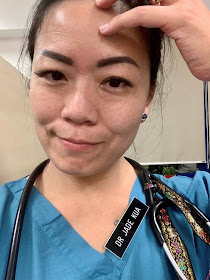
PHOTO: At the emergency department where paediatrics emergency specialist Jade Kua treats Covid-19 cases in addition to regular emergencies, doctors are split into four teams of 21. Each team takes alternate 12-hour shifts and does not interact with other teams.
Picture posted by Celine Tan, Today on 17 February, 2020 - Senior pediatric emergency specialist and mum of six Jade Kua, 41, tells 8days.sg about life on the frontlines and how healthcare workers like herself are coping with the stresses of the fight against the coronavirus.
https://blogger.googleusercontent.com/img/b/R29vZ2xl/AVvXsEhqk6NWf-b_XxWBLltsIUKhlnBFBnlMq6JztDfjZXuOaNtGKnzejj9OmYteCGYr6fI-LXoZE9JsvyY_tFCFkwgN7c98OY1UmiY0iuzOB1VVVFQ66wyLiNJRzH7ahD2Ltrn30z2OqhzRZoM/s1600/jade-kua-1.jpg
https://www.8days.sg/image/12444330/3x4/1440/1920/a9f0823ff3656007d6b9132d64cc188c/DM/jade-kua-1.jpg
https://www.todayonline.com/8days/liveandlearn/vanityandhealth/hospital-doctor-battling-covid-19-frontlines-shares-how-fake
https://veryfatoldman.blogspot.com/2020/03/singapore-gives-coronavirus-frontliners.html
“We are in modular teams so the teams move together. So you and I would both do morning, off, night, off, morning off. Together. And then the other teams would do the same and we don’t intermingle,” said Kua.
Chia, who works at the Singapore General Hospital, said doctors had been split up according to their functions.
“We try not to meet at all with the other teams as much as possible. We’ll just say hi from across the corridor. Meals are the same. All our cafeterias and everything have got social distancing spaced in already,” said Chia, who is also a member of parliament and chairs a shadow committee on health.
Chia said the health care system could also tap on doctors in the private sector.
Not every country has a plan like this. Last year’s Global Health Security Index by the Economist Intelligence Unit found that 70 per cent of 195 countries scored poorly when it came to having a national plan for dealing with epidemics or pandemics. Almost three in 10 had failed to identify which areas were insufficiently staffed. In India, with a population of 1.3 billion, only about 20,000 doctors are trained in key areas such as critical care, emergency medicine and pulmonology.
In contrast, Singapore published its first Influenza Pandemic Preparedness and Response Plan in June 2005 and has since honed it to a tee. Hospitals regularly war-game scenarios such as pandemics or terrorist attacks and the simulations are sometimes observed by the Ministry of Health, which grades the performance and recommends areas for improvement.
The plan also covers the need to stockpile equipment to avoid the sort of shortages many countries are now facing, another lesson inspired by Sars when masks, gloves and gowns were in short supply.
In a pandemic preparation paper published in 2008, Singapore public health specialist Jeffery Cutter wrote that Singapore’s stockpile was sufficient to cover at least 5 to 6 months’ use by all front-line health care workers.
During the Covid-19 outbreak, it has also told citizens to not wear masks so it can conserve supply for medical staff.
Having enough protective gear has reassured Singapore’s health care workers such as Kua, a mother of six who blogged about her experience fighting Covid-19. Kua said: “I’m safe and my family is safe.”
SOMETHING YOU CAN’T GUARD AGAINST
Despite the many positives to emerge from the Lion City, its health care workers are struggling with another problem: discrimination.
While in France, Italy and Britain, residents cheer health care workers from their windows, in Singapore health care workers are seen by some people as disease carriers.
“I try not to wear my uniform home because you never know what kind of incidents you may encounter,” said one Singapore nurse. “The public is scared and wearing our uniforms actually causes quite a bit of inconvenience. One of my staff tried to book a private-hire car to the hospital for an emergency and she was rejected by five drivers.”
There is a similar stigma in India, where the All India Institute of Medical Sciences has appealed to the government for help after health workers were forced out of their homes by panicked landlords and housing societies.
“Many doctors are stranded on the roads with all their luggage, nowhere to go, across the country,” the institute said in a letter.
Lim, from the Saw Swee Hock School of Public Health, said the worst human impulses and “every man for himself” attitudes could emerge in crises and “that is exactly why governments have to step in”.
Discrimination could affect both the performance and motivation of health care workers, Lim warned.
Meanwhile, when health care workers are infected, it creates a “triple whammy” threat.
“It means one fewer professional in an already-strained system, another patient to care for and, potentially, a team of colleagues who need to be quarantined,” said Lim.
“We must do everything possible to keep our health care workforce safe and free from Covid-19.” ■
Picture posted by Kok Xing Hui, South China Morning Post on 28 March 2020 at 7:30am
https://blogger.googleusercontent.com/img/b/R29vZ2xl/AVvXsEhSHjnpk6txUsdcJPm3gONBnDf_DP1GizuQcUmDYAqmbCBDCYJZe2dioKr_LrBqQqH2-O5pPmdmGBYNNTN9DFLSx44hm9rOb62oVFYjid7Bv6gV7AebyeOBX_Aay6zg-u8A0FDIXuhwFjc/s1600/66fb21f8-6ff5-11ea-b0ed-5e14cf8eb9e1_1320x770_115118.jpg.png
https://cdn.i-scmp.com/sites/default/files/d8/images/methode/2020/03/29/66fb21f8-6ff5-11ea-b0ed-5e14cf8eb9e1_1320x770_115118.jpg
https://www.scmp.com/week-asia/health-environment/article/3077345/coronavirus-why-so-few-infections-singapores-health
SINGAPORE, A CASE STUDY
Amid this sharing of advice, it is often Singapore that is held up as an example to replicate. Despite the country grappling with a rising load of Covid-19 patients, most of whom have recently returned to the city state from abroad, its health care system has continued to run smoothly. Doctors say this is because it has been preparing for a pandemic ever since Sars caught it by surprise. During the Sars outbreak, health care workers accounted for 41 per cent of Singapore’s 238 infections.
Consequently its hospitals swung into contingency planning mode early on in the coronavirus outbreak, telling staff to defer leave and travel plans after its first cases emerged.
Meanwhile, its hospitals swiftly split their workforces into teams to ensure there were enough workers if the outbreak worsened, and to ensure workers got enough rest.
Singapore has 13,766 doctors, or 2.4 doctors for every 1,000 people. That compares to 2.59 in the US, 1.78 in China and 4.2 in Germany. Places like Myanmar and Thailand have fewer than one doctor for every 1,000 people.
“The objective is that you can run essential services with the greatest amount of security. Make sure functional units have redundancy built in, and are separate from each other. It depends on what you feel is sufficient to carry on services if one team is affected, factoring in rest periods and some system of rotation,” said Chia Shi-Lu, an orthopaedic surgeon.
The key is to ensure a good doctor-to-patient ratio and ensure there are enough specialists for the critical work, such as doctors and nurses who can provide intensive care, and know how to operate mechanical ventilators or machines to pump and oxygenate a patient’s blood outside the body.
At the emergency department where paediatrics emergency specialist Jade Kua treats Covid-19 cases in addition to regular emergencies, doctors are split into four teams of 21. Each team takes alternate 12-hour shifts and does not interact with other teams.

PHOTO: At the emergency department where paediatrics emergency specialist Jade Kua treats Covid-19 cases in addition to regular emergencies, doctors are split into four teams of 21. Each team takes alternate 12-hour shifts and does not interact with other teams.
Picture posted by Celine Tan, Today on 17 February, 2020 - Senior pediatric emergency specialist and mum of six Jade Kua, 41, tells 8days.sg about life on the frontlines and how healthcare workers like herself are coping with the stresses of the fight against the coronavirus.
https://blogger.googleusercontent.com/img/b/R29vZ2xl/AVvXsEhqk6NWf-b_XxWBLltsIUKhlnBFBnlMq6JztDfjZXuOaNtGKnzejj9OmYteCGYr6fI-LXoZE9JsvyY_tFCFkwgN7c98OY1UmiY0iuzOB1VVVFQ66wyLiNJRzH7ahD2Ltrn30z2OqhzRZoM/s1600/jade-kua-1.jpg
https://www.8days.sg/image/12444330/3x4/1440/1920/a9f0823ff3656007d6b9132d64cc188c/DM/jade-kua-1.jpg
https://www.todayonline.com/8days/liveandlearn/vanityandhealth/hospital-doctor-battling-covid-19-frontlines-shares-how-fake
https://veryfatoldman.blogspot.com/2020/03/singapore-gives-coronavirus-frontliners.html
“We are in modular teams so the teams move together. So you and I would both do morning, off, night, off, morning off. Together. And then the other teams would do the same and we don’t intermingle,” said Kua.
Chia, who works at the Singapore General Hospital, said doctors had been split up according to their functions.
“We try not to meet at all with the other teams as much as possible. We’ll just say hi from across the corridor. Meals are the same. All our cafeterias and everything have got social distancing spaced in already,” said Chia, who is also a member of parliament and chairs a shadow committee on health.
Chia said the health care system could also tap on doctors in the private sector.
Not every country has a plan like this. Last year’s Global Health Security Index by the Economist Intelligence Unit found that 70 per cent of 195 countries scored poorly when it came to having a national plan for dealing with epidemics or pandemics. Almost three in 10 had failed to identify which areas were insufficiently staffed. In India, with a population of 1.3 billion, only about 20,000 doctors are trained in key areas such as critical care, emergency medicine and pulmonology.
In contrast, Singapore published its first Influenza Pandemic Preparedness and Response Plan in June 2005 and has since honed it to a tee. Hospitals regularly war-game scenarios such as pandemics or terrorist attacks and the simulations are sometimes observed by the Ministry of Health, which grades the performance and recommends areas for improvement.
The plan also covers the need to stockpile equipment to avoid the sort of shortages many countries are now facing, another lesson inspired by Sars when masks, gloves and gowns were in short supply.
In a pandemic preparation paper published in 2008, Singapore public health specialist Jeffery Cutter wrote that Singapore’s stockpile was sufficient to cover at least 5 to 6 months’ use by all front-line health care workers.
During the Covid-19 outbreak, it has also told citizens to not wear masks so it can conserve supply for medical staff.
Having enough protective gear has reassured Singapore’s health care workers such as Kua, a mother of six who blogged about her experience fighting Covid-19. Kua said: “I’m safe and my family is safe.”
SOMETHING YOU CAN’T GUARD AGAINST
Despite the many positives to emerge from the Lion City, its health care workers are struggling with another problem: discrimination.
While in France, Italy and Britain, residents cheer health care workers from their windows, in Singapore health care workers are seen by some people as disease carriers.
“I try not to wear my uniform home because you never know what kind of incidents you may encounter,” said one Singapore nurse. “The public is scared and wearing our uniforms actually causes quite a bit of inconvenience. One of my staff tried to book a private-hire car to the hospital for an emergency and she was rejected by five drivers.”
There is a similar stigma in India, where the All India Institute of Medical Sciences has appealed to the government for help after health workers were forced out of their homes by panicked landlords and housing societies.
“Many doctors are stranded on the roads with all their luggage, nowhere to go, across the country,” the institute said in a letter.
Lim, from the Saw Swee Hock School of Public Health, said the worst human impulses and “every man for himself” attitudes could emerge in crises and “that is exactly why governments have to step in”.
Discrimination could affect both the performance and motivation of health care workers, Lim warned.
Meanwhile, when health care workers are infected, it creates a “triple whammy” threat.
“It means one fewer professional in an already-strained system, another patient to care for and, potentially, a team of colleagues who need to be quarantined,” said Lim.
“We must do everything possible to keep our health care workforce safe and free from Covid-19.” ■
PHOTO: Singapore's aggressive response to the new coronavirus has paid off so far. Strict, 'whole society' effort wins praise but appears difficult to replicate. "There is no apology for the tough measures such as social distancing, rationing of masks, and the rigorous enforcement of quarantine and stay-home orders," said Eugene Tan, an associate professor of law at Singapore Management University.
This virus doesn’t respect ethnic boundaries or national borders. It’s not a Chinese virus; it’s our virus. It’s in Afghanistan, Belgium, Cambodia, Denmark, France, America—77 countries and counting have been contaminated by the coronavirus. (11 March 2020).
We’re all members of the great human family, created in the image of God (Genesis 1:27). The color of our skin, the language we speak, our accents, and our cultures count for nothing in the eyes of a contagious disease.
In our suffering, in the pain of losing a loved one, we are completely equal—weak and without answers. [2]
"In the eyes of the world, we’re all different; in the eyes of the virus, we’re just the same." [2]
Photo © Getty Images
Picture posted by Kentaro Iwamoto, Nikkei staff writer on 08 March 2020 at 14:01 JST
https://blogger.googleusercontent.com/img/b/R29vZ2xl/AVvXsEguKjhoSLa3jEHPoUnK16sXROD_1505lPdEMHYeWZtkngnZc8W2k2HwutAi3_sJwZnmtzvwLh3cy2bk0CyHJgMypDRmRghQToUbC890Q9D2IGgfaTjE45J8upC-3Oe25pRYKLt7hHNFtwI/s1600/1196095155.png
https://www.ft.com/__origami/service/image/v2/images/raw/https%3A%2F%2Fs3-ap-northeast-1.amazonaws.com%2Fpsh-ex-ftnikkei-3937bb4%2Fimages%2F8%2F7%2F9%2F0%2F25400978-9-eng-GB%2FCropped-1583478252GettyImages-1196095155.jpg?source=nar-cms
https://asia.nikkei.com/Spotlight/Coronavirus/What-Singapore-s-coronavirus-tactics-can-and-can-t-teach-world
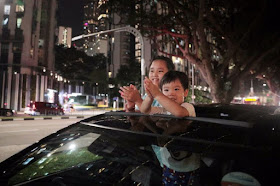
Singapore gives coronavirus frontliners a round of applause, posted on Tuesday, 31 March 2020
https://veryfatoldman.blogspot.com/2020/03/singapore-gives-coronavirus-frontliners.html

Staff at Alexandra Hospital explain urgent need to adapt amid Covid-19, posted on Monday, 30 March 2020
https://veryfatoldman.blogspot.com/2020/03/staff-at-alexandra-hospital-explain.html
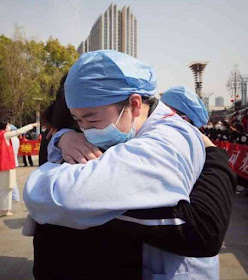
Coronavirus: China marks major milestone with zero domestic infections, posted on Saturday, 21 March 2020
https://veryfatoldman.blogspot.com/2020/03/coronavirus-china-marks-major-milestone.html

Japan trip disrupted? View Gardens’ cherry blossom, posted on Thursday, 12 March 2020
https://veryfatoldman.blogspot.com/2020/03/japan-trip-disrupted-view-gardens.html
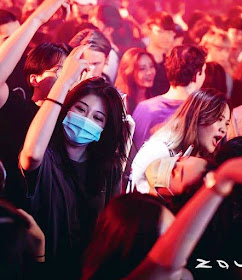
Women wear surgical masks to party at Zouk, shows that life goes on, posted on Saturday, 07 March 2020


https://veryfatoldman.blogspot.com/2020/02/900-carousell-users-join-movement-to.html

https://veryfatoldman.blogspot.com/2020/02/nobody-knows-i-work-in-healthcare-sgh.html

S-hook lady gets real on how Singaporeans are reacting to coronavirus outbreak, posted on Tuesday, 25 February 2020
https://veryfatoldman.blogspot.com/2020/02/s-hook-lady-gets-real-on-how.html

Lerine Yeo flaunted 'big burden', posted on Sunday, 07 October 2018
https://veryfatoldman.blogspot.com/2018/10/lerine-yeo-flaunted-big-burden.html
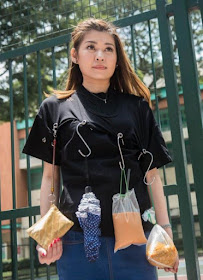
I'll never eat luncheon meat again thanks to S-hook lady posted on Monday, 01 October 2018
https://veryfatoldman.blogspot.com/2018/10/ill-never-eat-luncheon-meat-again.html

Singapore's most famous auntie declares war on coronavirus with song, posted on Friday, 21 February 2020
https://veryfatoldman.blogspot.com/2020/02/singapores-most-famous-auntie-declares.html

Opinion: I have seen nurses abused and it must stop, posted on Saturday, February 15, 2020
https://veryfatoldman.blogspot.com/2020/02/opinion-i-have-seen-nurses-abused-and.html

Diary of a coronavirus survivor: Wuhan nurse claims she recovered from virus at home, posted on Friday, 14 February 2020
https://veryfatoldman.blogspot.com/2020/02/diary-of-coronavirus-survivor-wuhan.html
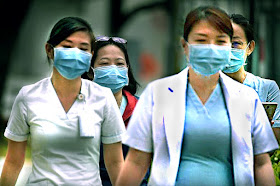
Support healthcare workers, don't shun them: Gan Kim Yong, posted on Thursday, 13 February 2020
https://veryfatoldman.blogspot.com/2020/02/support-healthcare-workers-dont-shun.html
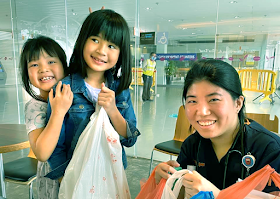
This made my day: 2 girls deliver comfort food to cheer hospital staff on, posted on Wednesday, 12 February 2020
https://veryfatoldman.blogspot.com/2020/02/this-made-my-day-2-girls-deliver.html
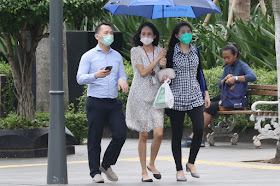
Climate, immunity, incompetence? Indonesia's zero recorded coronavirus cases raise questions, posted on Monday, 10 February 2020
https://veryfatoldman.blogspot.com/2020/02/climate-immunity-incompetence.html

This made my day: Woman gives out ginger tea with surgical masks – and other kind acts during virus outbreak, posted on Tuesday, 04 February 2020
https://veryfatoldman.blogspot.com/2020/02/this-made-my-day-woman-gives-out-ginger.html
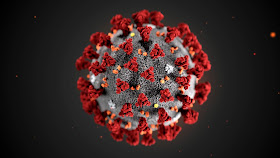
'Singapore’s response to virus is testament to resilient society', posted on Monday, 03 February 2020
https://veryfatoldman.blogspot.com/2020/02/singapores-response-to-virus-is.html
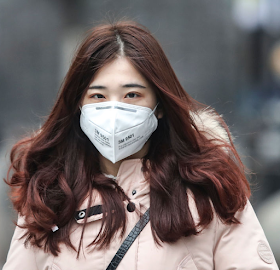
Public should use surgical masks, not N95 masks, to guard against Wuhan virus spread: Experts , posted on Wednesday, 29 January 2020
https://veryfatoldman.blogspot.com/2020/01/public-should-use-surgical-masks-not.html
We’re all members of the great human family, created in the image of God (Genesis 1:27). The color of our skin, the language we speak, our accents, and our cultures count for nothing in the eyes of a contagious disease.
In our suffering, in the pain of losing a loved one, we are completely equal—weak and without answers. [2]
"In the eyes of the world, we’re all different; in the eyes of the virus, we’re just the same." [2]
Photo © Getty Images
Picture posted by Kentaro Iwamoto, Nikkei staff writer on 08 March 2020 at 14:01 JST
https://blogger.googleusercontent.com/img/b/R29vZ2xl/AVvXsEguKjhoSLa3jEHPoUnK16sXROD_1505lPdEMHYeWZtkngnZc8W2k2HwutAi3_sJwZnmtzvwLh3cy2bk0CyHJgMypDRmRghQToUbC890Q9D2IGgfaTjE45J8upC-3Oe25pRYKLt7hHNFtwI/s1600/1196095155.png
https://www.ft.com/__origami/service/image/v2/images/raw/https%3A%2F%2Fs3-ap-northeast-1.amazonaws.com%2Fpsh-ex-ftnikkei-3937bb4%2Fimages%2F8%2F7%2F9%2F0%2F25400978-9-eng-GB%2FCropped-1583478252GettyImages-1196095155.jpg?source=nar-cms
https://asia.nikkei.com/Spotlight/Coronavirus/What-Singapore-s-coronavirus-tactics-can-and-can-t-teach-world
By Kok Xing Hui, South China Morning Post, 28 March 2020 at 7:30am
This article was first published in South China Morning Post.
This article was first published in South China Morning Post.
Other stories

Singapore gives coronavirus frontliners a round of applause, posted on Tuesday, 31 March 2020
https://veryfatoldman.blogspot.com/2020/03/singapore-gives-coronavirus-frontliners.html

Staff at Alexandra Hospital explain urgent need to adapt amid Covid-19, posted on Monday, 30 March 2020
https://veryfatoldman.blogspot.com/2020/03/staff-at-alexandra-hospital-explain.html

Coronavirus: China marks major milestone with zero domestic infections, posted on Saturday, 21 March 2020
https://veryfatoldman.blogspot.com/2020/03/coronavirus-china-marks-major-milestone.html

Japan trip disrupted? View Gardens’ cherry blossom, posted on Thursday, 12 March 2020
https://veryfatoldman.blogspot.com/2020/03/japan-trip-disrupted-view-gardens.html

Women wear surgical masks to party at Zouk, shows that life goes on, posted on Saturday, 07 March 2020

The difference between the cold and the flu, posted on Friday, 28 February 2020
https://veryfatoldman.blogspot.com/2020/02/the-difference-between-cold-and-flu.html
900 Carousell users join movement to give away free masks and supplies, posted on Friday, 28 February 2020

'Nobody knows I work in healthcare': SGH visitor registration staff shares what it's like to work at the frontline, posted on Wednesday, 26 February 2020

S-hook lady gets real on how Singaporeans are reacting to coronavirus outbreak, posted on Tuesday, 25 February 2020
https://veryfatoldman.blogspot.com/2020/02/s-hook-lady-gets-real-on-how.html

Lerine Yeo flaunted 'big burden', posted on Sunday, 07 October 2018
https://veryfatoldman.blogspot.com/2018/10/lerine-yeo-flaunted-big-burden.html

I'll never eat luncheon meat again thanks to S-hook lady posted on Monday, 01 October 2018
https://veryfatoldman.blogspot.com/2018/10/ill-never-eat-luncheon-meat-again.html

Singapore's most famous auntie declares war on coronavirus with song, posted on Friday, 21 February 2020
https://veryfatoldman.blogspot.com/2020/02/singapores-most-famous-auntie-declares.html

Opinion: I have seen nurses abused and it must stop, posted on Saturday, February 15, 2020
https://veryfatoldman.blogspot.com/2020/02/opinion-i-have-seen-nurses-abused-and.html

Diary of a coronavirus survivor: Wuhan nurse claims she recovered from virus at home, posted on Friday, 14 February 2020
https://veryfatoldman.blogspot.com/2020/02/diary-of-coronavirus-survivor-wuhan.html

Support healthcare workers, don't shun them: Gan Kim Yong, posted on Thursday, 13 February 2020
https://veryfatoldman.blogspot.com/2020/02/support-healthcare-workers-dont-shun.html

This made my day: 2 girls deliver comfort food to cheer hospital staff on, posted on Wednesday, 12 February 2020
https://veryfatoldman.blogspot.com/2020/02/this-made-my-day-2-girls-deliver.html

Climate, immunity, incompetence? Indonesia's zero recorded coronavirus cases raise questions, posted on Monday, 10 February 2020
https://veryfatoldman.blogspot.com/2020/02/climate-immunity-incompetence.html

This made my day: Woman gives out ginger tea with surgical masks – and other kind acts during virus outbreak, posted on Tuesday, 04 February 2020
https://veryfatoldman.blogspot.com/2020/02/this-made-my-day-woman-gives-out-ginger.html

'Singapore’s response to virus is testament to resilient society', posted on Monday, 03 February 2020
https://veryfatoldman.blogspot.com/2020/02/singapores-response-to-virus-is.html

Public should use surgical masks, not N95 masks, to guard against Wuhan virus spread: Experts , posted on Wednesday, 29 January 2020
https://veryfatoldman.blogspot.com/2020/01/public-should-use-surgical-masks-not.html
Reference
[1] Kok Xing Hui, South China Morning Post, Why are there so few coronavirus infections in Singapore's health workers?, posted on 30 March 2020 at 7:30am, https://www.scmp.com/week-asia/health-environment/article/3076926/singapore-way-eight-steps-fight-coronavirus-thousands
[2] Mark Oden, 8 Things the Coronavirus Should Teach Us, posted on 11 March 2020, https://www.thegospelcoalition.org/article/things-coronavirus-teach-us/
[1] Kok Xing Hui, South China Morning Post, Why are there so few coronavirus infections in Singapore's health workers?, posted on 30 March 2020 at 7:30am, https://www.scmp.com/week-asia/health-environment/article/3076926/singapore-way-eight-steps-fight-coronavirus-thousands
[2] Mark Oden, 8 Things the Coronavirus Should Teach Us, posted on 11 March 2020, https://www.thegospelcoalition.org/article/things-coronavirus-teach-us/
Links
South China Morning Post - https://www.scmp.com/week-asia/health-environment/article/3077345/coronavirus-why-so-few-infections-singapores-health
coronavirus - https://www.scmp.com/topics/coronavirus-outbreak
Philippines - https://www.scmp.com/topics/philippines
United States - https://www.scmp.com/topics/united-states
Singapore’s experience - https://www.scmp.com/topics/coronavirus-singapore
New International Version (NIV), Holy Bible, New International Version®, NIV® Copyright ©1973, 1978, 1984, 2011 by Biblica, Inc.® Used by permission. All rights reserved worldwide.
Genesis 1:27 - https://www.biblegateway.com/passage/?search=Genesis+1%3A27&version=NIV
- https://blogger.googleusercontent.com/img/b/R29vZ2xl/AVvXsEhEBjws8VHDbb-TULvBaJnTH6jPwHnZfFHemr5yik6mVNH5gB9lOQ7fMrV0moxMckLwO_rOFLVoV0q5juJgG1_dubNdzJ-QlVFlLuEuFyPmSZoKIck91gvNC0frCeVwj8pUlJDrZH_UNDA/s1600/b3037a60-7012-11ea-b0ed-5e14cf8eb9e1_image_hires_115118.png
- https://cdn.i-scmp.com/sites/default/files/styles/1200x800/public/d8/images/methode/2020/03/29/b3037a60-7012-11ea-b0ed-5e14cf8eb9e1_image_hires_115118.jpg?itok=1Jck61Vl&v=1585453887
- https://www.scmp.com/week-asia/health-environment/article/3077345/coronavirus-why-so-few-infections-singapores-health
- https://blogger.googleusercontent.com/img/b/R29vZ2xl/AVvXsEiWAA3ry07PhsVhEydn4AupweZ-53u5kGLsGe_5kbt_FbUgLwy7vfPAA7iIhLmWMeOHZLrlkeU4t8sMnncB_4gR22nMwtgRe_1STx9RH7NsLOYiY7At2w1xLA_8LJv2995YRHYkCbE7SVM/s1600/WHO_01April2020.png
- WHO_01April2020.png
- https://www.scmp.com/week-asia/health-environment/article/3076926/singapore-way-eight-steps-fight-coronavirus-thousands
- https://blogger.googleusercontent.com/img/b/R29vZ2xl/AVvXsEg8-Uzuh7qr8TYxLRK6uhemgzgk6x7P_glMDov4M6oE5Sf8TRFq4OWzPRkQD9QNqHqXWsOYU687qrau7K1CKxvO61bMBqYZDguKW-v4pOIRNrUtBnuqBjMYpZYmhDd72d20VMvhyphenhyphenLg1OtA/s1600/6e5b6278-6ff5-11ea-b0ed-5e14cf8eb9e1_1320x770_115118.png
- https://cdn.i-scmp.com/sites/default/files/d8/images/methode/2020/03/29/6e5b6278-6ff5-11ea-b0ed-5e14cf8eb9e1_1320x770_115118.jpg
- https://www.scmp.com/week-asia/health-environment/article/3077345/coronavirus-why-so-few-infections-singapores-health
- https://blogger.googleusercontent.com/img/b/R29vZ2xl/AVvXsEigITI3dSPUWN6o9zEsPcQx3fJE8XYpQntmVkeLI-RvKUPqKiKpILrOORgbvNkA4xDvAYeyS4tRtSVhEwR9ZvNq-misxqV7-Uy8PB9DSYZ64LiWau9IfQbDAiG2I02wlNf5lNGd-sf117g/s1600/5c6682fa-6ff5-11ea-b0ed-5e14cf8eb9e1_1320x770_115118.png
- https://cdn.i-scmp.com/sites/default/files/d8/images/methode/2020/03/29/5c6682fa-6ff5-11ea-b0ed-5e14cf8eb9e1_1320x770_115118.jpg
- https://www.scmp.com/week-asia/health-environment/article/3077345/coronavirus-why-so-few-infections-singapores-health
- https://blogger.googleusercontent.com/img/b/R29vZ2xl/AVvXsEhSHjnpk6txUsdcJPm3gONBnDf_DP1GizuQcUmDYAqmbCBDCYJZe2dioKr_LrBqQqH2-O5pPmdmGBYNNTN9DFLSx44hm9rOb62oVFYjid7Bv6gV7AebyeOBX_Aay6zg-u8A0FDIXuhwFjc/s1600/66fb21f8-6ff5-11ea-b0ed-5e14cf8eb9e1_1320x770_115118.jpg.png
- https://cdn.i-scmp.com/sites/default/files/d8/images/methode/2020/03/29/66fb21f8-6ff5-11ea-b0ed-5e14cf8eb9e1_1320x770_115118.jpg
- https://www.scmp.com/week-asia/health-environment/article/3077345/coronavirus-why-so-few-infections-singapores-health
- https://blogger.googleusercontent.com/img/b/R29vZ2xl/AVvXsEhqk6NWf-b_XxWBLltsIUKhlnBFBnlMq6JztDfjZXuOaNtGKnzejj9OmYteCGYr6fI-LXoZE9JsvyY_tFCFkwgN7c98OY1UmiY0iuzOB1VVVFQ66wyLiNJRzH7ahD2Ltrn30z2OqhzRZoM/s1600/jade-kua-1.jpg
- https://www.8days.sg/image/12444330/3x4/1440/1920/a9f0823ff3656007d6b9132d64cc188c/DM/jade-kua-1.jpg
- https://www.todayonline.com/8days/liveandlearn/vanityandhealth/hospital-doctor-battling-covid-19-frontlines-shares-how-fake
- https://veryfatoldman.blogspot.com/2020/03/singapore-gives-coronavirus-frontliners.html
- https://blogger.googleusercontent.com/img/b/R29vZ2xl/AVvXsEguKjhoSLa3jEHPoUnK16sXROD_1505lPdEMHYeWZtkngnZc8W2k2HwutAi3_sJwZnmtzvwLh3cy2bk0CyHJgMypDRmRghQToUbC890Q9D2IGgfaTjE45J8upC-3Oe25pRYKLt7hHNFtwI/s1600/1196095155.png
- https://www.ft.com/__origami/service/image/v2/images/raw/https%3A%2F%2Fs3-ap-northeast-1.amazonaws.com%2Fpsh-ex-ftnikkei-3937bb4%2Fimages%2F8%2F7%2F9%2F0%2F25400978-9-eng-GB%2FCropped-1583478252GettyImages-1196095155.jpg?source=nar-cms
- https://asia.nikkei.com/Spotlight/Coronavirus/What-Singapore-s-coronavirus-tactics-can-and-can-t-teach-world





